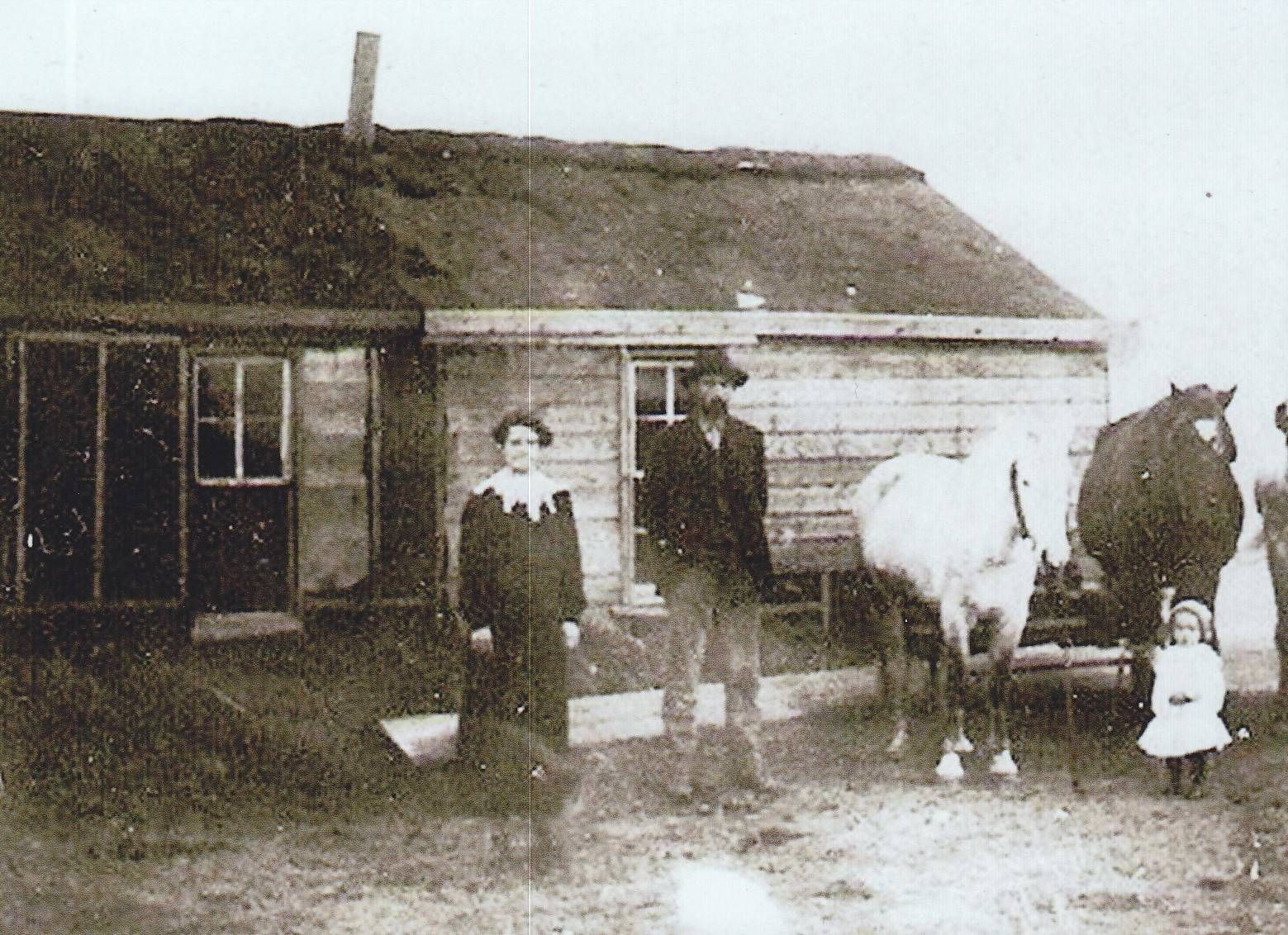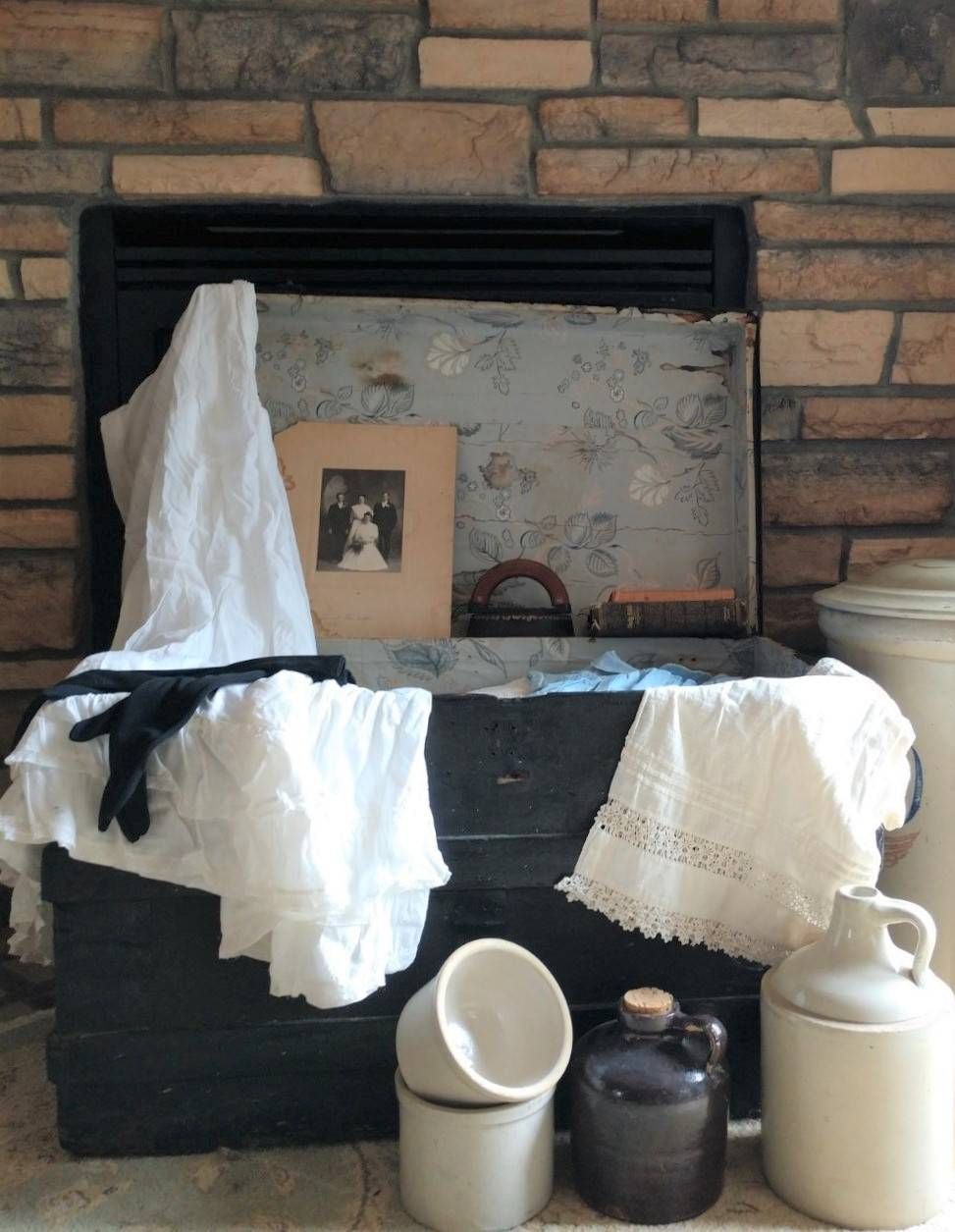From the Wheat Fields of North Dakota to the Pickle Gardens of New York Mills, MN
Memories of a family traveling east in covered wagons
It was the day of my ninth birthday. What a wonderful day it promised to be. I had spent the first nine years of my life on our family wheat farm in North Dakota. This was all I had ever known. Now we were going to start on a long trip to Minnesota where my father lived when he was a boy.
-Hellen (McQuillen) Scheer
My grandmother, Hellen (McQuillen) Scheer, wrote this memory when she was in her nineties. She was born near Wildrose, North Dakota, in 1914. Her parents, Palmer James "PJ" and Emily, courted in Forest Lake, Minnesota. They traveled to "the Dakotas" in 1903, where they each filed a homestead claim on 160-acres. PJ and Emily married in 1906, had seven children, buried one, and eked out a living by raising wheat.
Farming is a gamble and wheat is particularly fickle. The weather is unpredictable during the growing season. Drought, flooding, or hail can destroy the wheat even up to the day of harvest. The McQuillens were diligent farmers, but after seventeen years, PJ and Emily tired of this gamble. Emily missed her family, PJ wanted the older children to attend high school, and they both yearned for the beauty of the lakes and trees of Minnesota.

Preparing for the journey
Emily had been ill since the birth of her last child, so PJ prepared for their 600-mile journey. He ordered two large trunks from Montgomery Ward for clothing and household goods. In four-gallon crocks he preserved and packed food they would eat while traveling: eggs in salt, cooked meat patties in fresh lard, and potatoes in sand. He made three large cheeses, which were stored in heavy, waxed canvas.
Finally, they erected the custom-made, bowed cover over the farm wagon. In the wagon, they placed food, bedding, and supplies that they would use every day. They loaded another wagon with furniture, tools, supplies, chickens, and whatever else they needed to begin again in Minnesota.
Eastward bound

On July 8, 1923, the McQuillen family departed following trails and roads southeast. PJ drove the covered wagon, and fourteen-year-old Ivan drove behind him. The children, aged nine through thirteen, walked for hours at a time, and their dog Jack trotted the entire way. As often as possible, the McQuillens spent the night on the public property of a schoolhouse where water and outhouses were available.
Their first stop was Devil's Lake, where Emily's sister's family also raised wheat. Travel by loaded wagon is slow, so it took three weeks to cover the three hundred miles. The McQuillens stayed ten days to visit cousins they had never met and help with the threshing. Their next and final stop was to be a place large enough to have a high school, but small enough to have farms for rent. Somewhere along the way, PJ learned that the town of New York Mills, Minnesota, would meet their needs. Two days before school started, they found a house to rent in this community, a mile from a stately brick school for grades one through twelve.
New York Mills, Minnesota

Following the passage of the Homestead Act in 1865, Minnesota established a Board of Immigration to promote settlement in the state. It published pamphlets, brochures, and maps to advertise lands available to homestead. Finnish settlers came to Minnesota because of the prospects for employment—logging, mining, or working on the railroad—and the availability of homesteads. The latter drew Finns to the region that became New York Mills. In the 1920s, the community was one of the biggest groups of rural Finns in the state. They were industrious, had large families, and prosperous farms.
When the Scotch-Irish McQuillen family arrived in New York Mills, the Finnish community was in its third generation. Although by then, the Finns seldom spoke Finnish outside the home, they still used the sauna every Saturday night. The McQuillens enjoyed the social and political events of the Finnish people, including some of the food and other traditions.
For five years PJ and his children grew "pickles" in their one-acre garden to be shipped to the pickling plant in St. Cloud. They made and sold sauerkraut door-to-door, traded eggs in town, and helped others with large harvests. They still barely got by, but there were trees and lakes.
And, as PJ had wanted, the three oldest children graduated from high school while in New York Mills.
My classmates spoke some Finnish, but mostly the swear words! I remember visiting friends whose grandmothers wore white caps on their heads made from bleached salt sacks. It seemed they were always knitting or weaving. My dad liked coffee, but the Finns had a different way of drinking it. They placed a lump of sugar on their tongue and sucked the coffee through. I didn't mind the flatbread, but the fish soup was not for me.
-Hellen (McQuillen) Scheer


